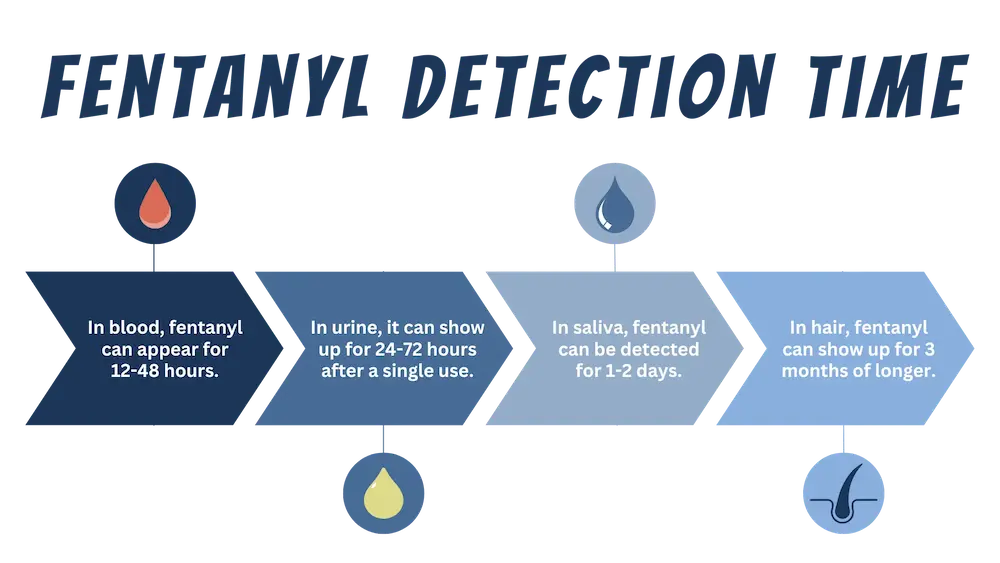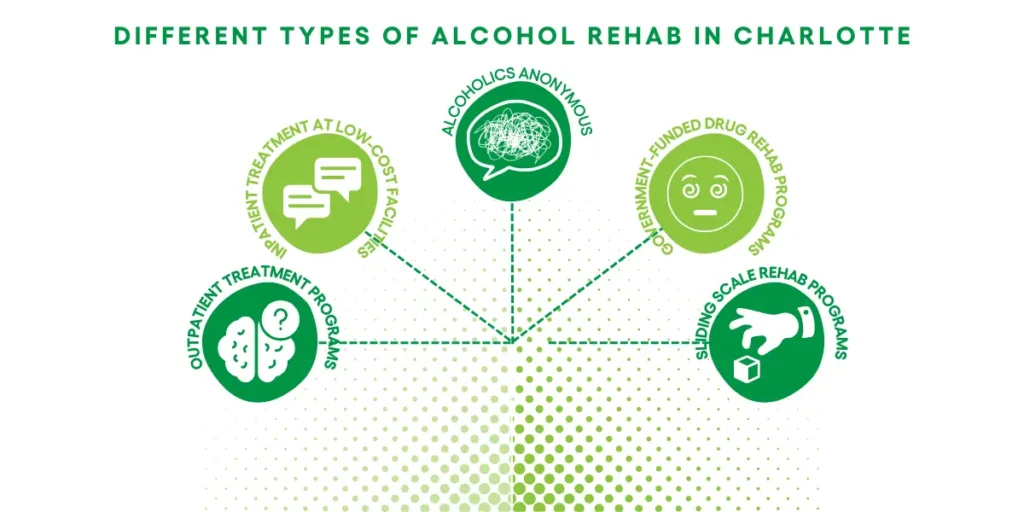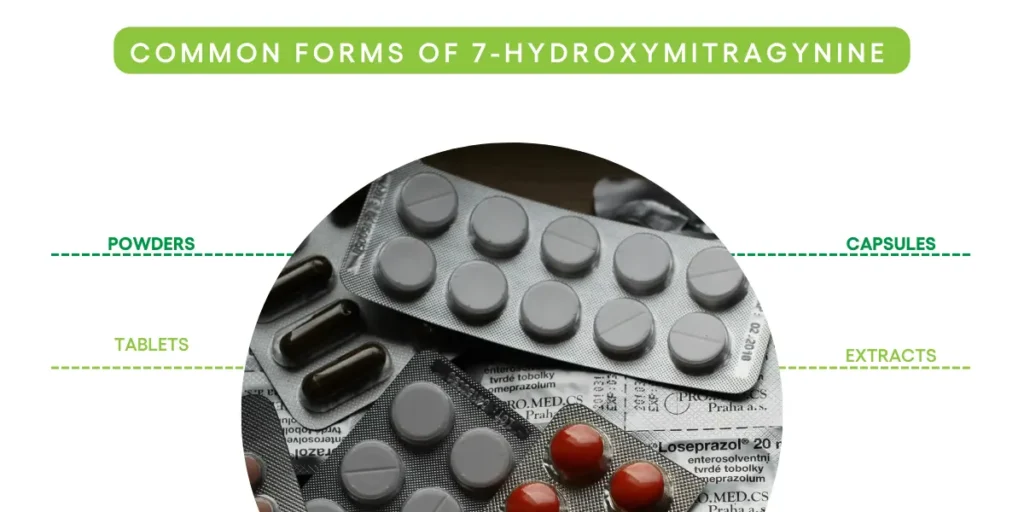Depending on the frequency of fentanyl use, it is possible for fentanyl to be detected in the body for more than three months after the last dose.
Fentanyl is a powerful synthetic opioid that is often prescribed for pain management. This drug is highly potent and has a high potential for abuse and addiction. Two milligrams of fentanyl is considered a potentially fatal dose, but fentanyl seized by the DEA has ranged from 0.2 mg to as much as 9 mg. Knowing how long fentanyl stays in your system can help you understand the importance of treatment, why medical professionals monitor its use when prescribed, and how long it will show up on a drug test – particularly in urine, blood, saliva, and hair.

Half-Life and Metabolism of Fentanyl
Fentanyl is typically administered via injection, transdermal patches, or lozenges. Once in the system, it is metabolized by the liver into norfentanyl, which is the primary metabolite. The half-life of fentanyl, which is the time it takes for half of the drug to be eliminated from the body, varies depending on the method of administration. For intravenous fentanyl, the half-life is approximately 3-12 hours, and for transdermal patches, it can range from 20-27 hours.
Detection Times in Urine
Urine tests are the most common method for detecting fentanyl and its metabolites. Urine tests can identify both fentanyl and norfentanyl, providing a clear indication of recent use. The common detection window for fentanyl in the urine is:
Single Use: Fentanyl can be detected in urine for up to 24-72 hours after a single use.
Regular Use: In cases of chronic or regular use, fentanyl may be detectable for up to a week or more after the last dose.

Factors including metabolism, hydration levels, and the amount of fentanyl used can affect these detection times.
Detection Times in Blood
Blood tests are less common for routine drug screening due to their invasiveness and shorter detection windows. However, they are useful in medical and emergency settings to determine current levels of intoxication. Fentanyl detection times in blood are typically:
Single Use: Detectable for up to 12-48 hours.
Regular Use: Detection may extend slightly longer, but it rarely exceeds a few days.

Blood tests provide a snapshot of recent drug use, making them useful for assessing acute intoxication or overdose situations.
Detection Times in Saliva
Saliva tests offer a non-invasive method for detecting fentanyl, but they are less commonly used. The detection window in saliva is relatively short:
Single Use: Fentanyl can be detected in saliva for up to 1-2 days.
Regular Use: Chronic users might have fentanyl detectable in saliva for slightly longer periods, but generally not beyond a few days.
Saliva tests can be convenient and quick, but they may not be as reliable as urine tests for long-term detection.
Detection Times in Hair
Hair tests provide the longest detection window for fentanyl and are often used in situations where a history of drug use needs to be established. Fentanyl can be detected in hair for:
Single Use: Hair tests can detect fentanyl use for up to 3 months or longer.
Regular Use: For regular users, fentanyl might be detectable for several months, depending on the length of the hair sample tested.
Hair testing analyzes the drug deposits in hair follicles, offering a comprehensive overview of drug use over an extended period.
Factors Influencing Detection Times
The amount of time that fentanyl remains detectable in the body varies significantly among individuals due to several influencing factors:
- Dosage and Frequency of Use: The amount of fentanyl taken and how often it is used play a significant role in its detectability. Higher doses and more frequent use lead to greater accumulation of the drug in the body, thereby extending the detection window.
- Metabolism: Metabolic rates differ from person to person. Those with faster metabolisms process and eliminate fentanyl more quickly than those with slower metabolisms. Factors such as genetics, overall health, and lifestyle can influence metabolic rate.
- Body Mass and Fat Content: Fentanyl is lipophilic, meaning it binds to fat tissues. Individuals with higher body fat percentages may retain the drug longer because it can be stored in fatty tissues. Consequently, people with more body fat may have longer detection times compared to those with less body fat.
- Hydration and Urine pH Levels: Hydration levels can affect how quickly fentanyl is excreted from the body. Staying well-hydrated may facilitate faster elimination of the drug. Additionally, the pH level of urine can impact the excretion rate. Acidic urine can enhance the excretion of fentanyl, whereas alkaline urine might slow down the process.
- Age and Overall Health: Age can influence how long fentanyl stays in the system. Older individuals often have slower metabolic rates and may also experience reduced liver and kidney function, which are crucial for processing and eliminating the drug. Consequently, older adults may retain fentanyl longer than younger individuals. Additionally, people with compromised liver or kidney function, regardless of age, will process fentanyl more slowly.
- Genetics: Genetic variations can affect how different individuals metabolize fentanyl. Certain genetic markers may influence enzyme activity in the liver, which plays a critical role in breaking down the drug.
- Overall Health and Co-Existing Conditions: The presence of other health conditions, such as cardiovascular diseases or endocrine disorders, can impact how the body processes and eliminates fentanyl. Co-existing conditions might slow down the metabolism and excretion of the drug.
Fentanyl is 50 times stronger than heroin and 100 times stronger than morphine – it is a major contributor to fatal and nonfatal overdoses.
Who Should Know the Detection Times of Fentanyl
Understanding how long fentanyl stays in the system is essential for various groups, each with distinct roles and responsibilities. Here’s why this knowledge is important for these key individuals and entities:
- Medical Professionals: Doctors, nurses, pharmacists, and other healthcare providers need to know the detection times of fentanyl to effectively monitor patient compliance with treatment plans. This information helps them adjust dosages, manage potential side effects, and identify signs of misuse or abuse. In emergency situations, understanding how long fentanyl remains in the body is crucial for treating overdoses and managing withdrawal symptoms.
- Patients: Individuals prescribed fentanyl for pain management should be aware of its detection times to ensure they use the medication safely and effectively. This knowledge helps them avoid accidental overdoses and understand how long the drug will impact their body, which is important for managing their daily activities and other medications they might be taking.
- Individuals Undergoing Drug Testing: Those who are subject to drug testing for employment, legal, or medical reasons need to be aware of fentanyl detection times to avoid unexpected positive test results. This group includes job applicants, employees in safety-sensitive positions, individuals on probation, and those in treatment programs for substance use disorders.
- Policy Makers and Employers: Policy makers and employers involved in developing and enforcing drug testing policies need accurate information on fentanyl detection times to create fair and effective guidelines. This ensures that workplace drug testing programs are based on scientific evidence, balancing the need for safety and productivity with the rights and privacy of employees.
- Substance Abuse Counselors and Rehabilitation Specialists: Professionals who work with individuals recovering from substance abuse need to understand fentanyl detection times to support their clients’ treatment plans. This knowledge helps in designing effective detoxification protocols and monitoring progress throughout the recovery process.
- Law Enforcement and Legal Professionals: Police officers, probation officers, and legal professionals need to be aware of fentanyl detection times when dealing with cases involving drug use. This understanding aids in interpreting drug test results accurately and making informed decisions regarding legal actions and rehabilitative measures.
- Researchers and Academics: Those conducting studies on opioid use, addiction, and public health should know fentanyl detection times to design accurate research protocols and analyze data effectively. This information contributes to the broader understanding of fentanyl’s impact on individuals and communities.
Understanding fentanyl detection timeframes helps with managing medical treatments, ensuring patient safety, complying with legal and employment requirements, and effectively addressing substance abuse and recovery efforts.
Getting Help with Fentanyl Addiction
Fentanyl is potent and has detection times that vary. If you or a loved one are struggling with fentanyl addiction, there is hope – Southeastern Recovery Center can help! Our team of experts understand how fentanyl works, how it metabolizes, and uses a variety of detection methods to determine the extent of fentanyl use and addiction. Our personalized programs can help you break the cycle of addiction and live a sober life. Call Southeastern Recovery Center today to learn more.





